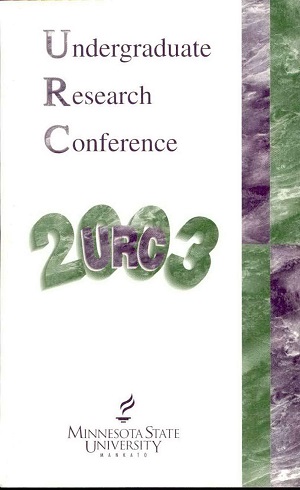The Occurrence of Bound Morphemes in the Speech of Children with Williams Syndrome Compared to Typically Developing Children
Location
CSU
Student's Major
Speech, Hearing, and Rehabilitation Services
Student's College
Allied Health and Nursing
Mentor's Name
Patricia Hargrove
Mentor's Department
Speech, Hearing, and Rehabilitation Services
Mentor's College
Allied Health and Nursing
Description
One of the characteristics of language that has been the frequent topic of research is children's production of word endings such as "ing," "ed," and the possessive (s). These are called bound morphemes. Interestingly, the production of bound morphemes in the speech of children with Williams Syndrome (WS) has received little attention. WS is a rare chromosomal disorder that occurs in approximately 1 in 25,000 births. Common features include mouth and facial abnormalities, early feeding and sleeping problems, and developmental disabilities. Of special interest to speech-language pathologists is that their language is often reported to be superior to their overall cognitive (intellectual) development. In this study, we compared incidences of bound morphemes in the speech of children with WS to those of typically developing children by using a story retelling task. A companion paper explores bound morphemes in spontaneous speech. Our findings revealed that the use of bound morphemes in this group was similar, which was not congruent with our hypothesis.
The Occurrence of Bound Morphemes in the Speech of Children with Williams Syndrome Compared to Typically Developing Children
CSU
One of the characteristics of language that has been the frequent topic of research is children's production of word endings such as "ing," "ed," and the possessive (s). These are called bound morphemes. Interestingly, the production of bound morphemes in the speech of children with Williams Syndrome (WS) has received little attention. WS is a rare chromosomal disorder that occurs in approximately 1 in 25,000 births. Common features include mouth and facial abnormalities, early feeding and sleeping problems, and developmental disabilities. Of special interest to speech-language pathologists is that their language is often reported to be superior to their overall cognitive (intellectual) development. In this study, we compared incidences of bound morphemes in the speech of children with WS to those of typically developing children by using a story retelling task. A companion paper explores bound morphemes in spontaneous speech. Our findings revealed that the use of bound morphemes in this group was similar, which was not congruent with our hypothesis.



